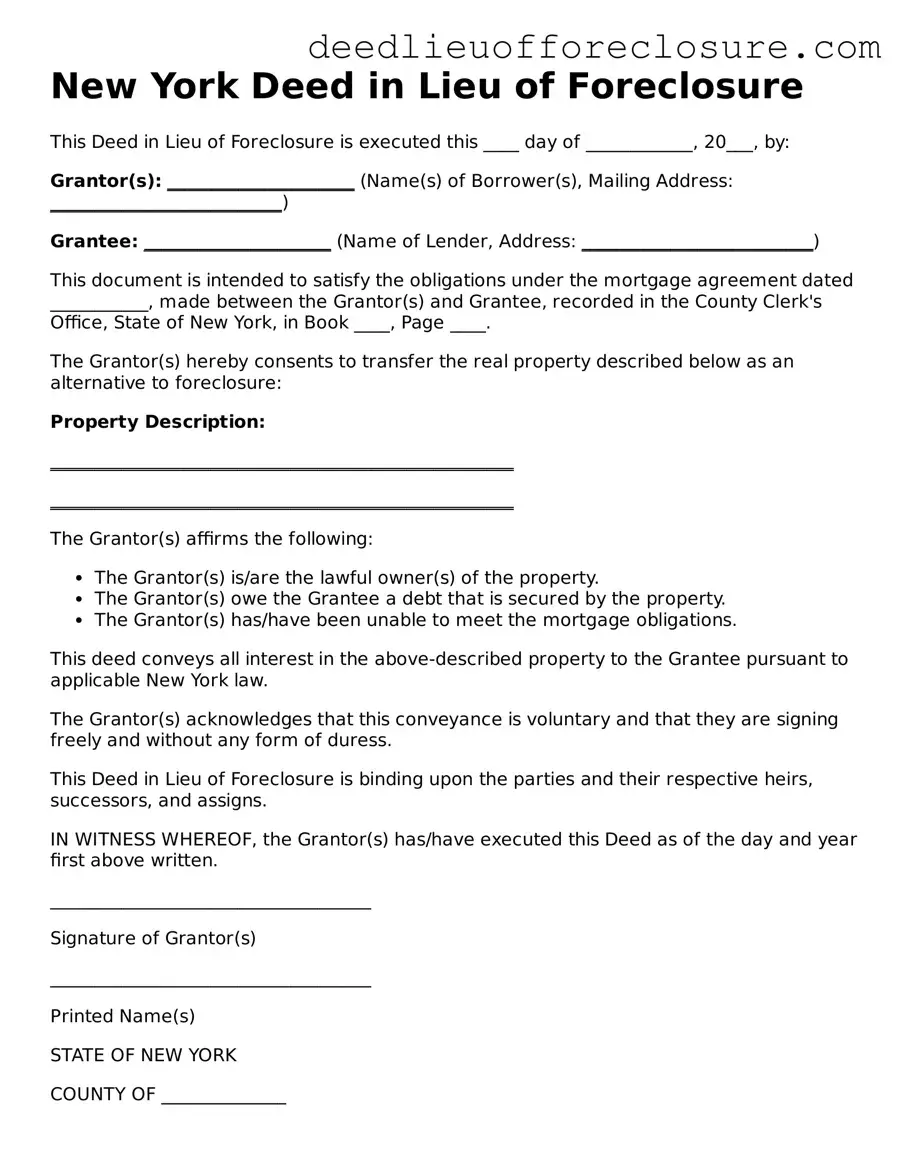New York Deed in Lieu of Foreclosure
This Deed in Lieu of Foreclosure is executed this ____ day of ____________, 20___, by:
Grantor(s): _____________________ (Name(s) of Borrower(s), Mailing Address: __________________________)
Grantee: _____________________ (Name of Lender, Address: __________________________)
This document is intended to satisfy the obligations under the mortgage agreement dated ___________, made between the Grantor(s) and Grantee, recorded in the County Clerk's Office, State of New York, in Book ____, Page ____.
The Grantor(s) hereby consents to transfer the real property described below as an alternative to foreclosure:
Property Description:
____________________________________________________
____________________________________________________
The Grantor(s) affirms the following:
- The Grantor(s) is/are the lawful owner(s) of the property.
- The Grantor(s) owe the Grantee a debt that is secured by the property.
- The Grantor(s) has/have been unable to meet the mortgage obligations.
This deed conveys all interest in the above-described property to the Grantee pursuant to applicable New York law.
The Grantor(s) acknowledges that this conveyance is voluntary and that they are signing freely and without any form of duress.
This Deed in Lieu of Foreclosure is binding upon the parties and their respective heirs, successors, and assigns.
IN WITNESS WHEREOF, the Grantor(s) has/have executed this Deed as of the day and year first above written.
____________________________________
Signature of Grantor(s)
____________________________________
Printed Name(s)
STATE OF NEW YORK
COUNTY OF ______________
On this ____ day of ____________, 20___, before me, a notary public in and for said state, personally appeared ____________________ (Name of Grantor(s)), known to me to be the person(s) whose name(s) is/are subscribed to the within instrument, and acknowledged that they executed the same.
____________________________________
Notary Public
